The CanLit Guides 2018 Collection is the result of collaboration between experts in the field and our editorial team. The chapters here cover a range of topics, time periods, and genres, and show the dynamic ways scholars are engaging with literatures in Canada today.
At Congress 2019, the Canadian Association of Learned Journals (CALJ) awarded Canadian Literature the Scholarly and Research Communication Journal Innovation Award in recognition of the CanLit Guides 2018 Collection.
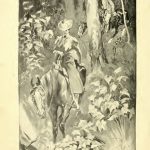
| A Woman Tenderfoot by Grace Gallatin Seton-Thompson | |
| Title |
|---|
Written by Tiffany Johnstone
In 1900, young American suffragist Grace Gallatin Seton-Thompson published her first book, an account of her extended 1897 camping trip in western regions of the United States and Canada. This chapter contextualizes A Woman Tenderfoot within Canadian literature and within the genre of travel writing that was so popular at the time. It then suggests several theoretical approaches for reading A Woman Tenderfoot more closely.
| An Introduction to the Short Story in Canada: Reading Alice Munro’s Who Do You Think You Are? | |
| Title |
|---|
Written by Nadine Fladd
This chapter introduces the short story as a literary genre, and discusses the short story cycle as a particularly important genre in Canada. It offers some suggestions for analyzing short stories from print culture and feminist perspectives, and it turns to Alice Munro’s 1978 short story cycle Who Do You Think You Are? as a case study in putting these perspectives to work.
| Canadian Literature and the Canada-US Border | |
| Title |
|---|
Written by Gillian Roberts
This chapter introduces Canadian literature’s relationship to the field of Canada-US Border Studies. In what we might call Canadian “border texts,” the border features prominently, if variably. The Canadian nation is a contested space, a site of struggle over political and cultural values between groups with diverging interests. Canadian border texts reveal the border as a site of struggle, too, figuring differently from different people’s perspectives. In analyzing these literary texts, we see that at times—for some people—the border appears porous and permeable, and at other times—for other people—impenetrable.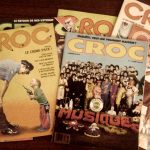
| Comics and Canadian Literature | |
| Title |
|---|
Written by Brenna Clarke Gray
Some of the most significant names in Canadian literature—people like author Margaret Atwood and poet bpNichol—have throughout their careers played with comics as part of their larger body of work. Literary scholars have often paid attention when “serious” writers engage in comics, such as Carl Peters in his collection bpNichol Comics, or Reingard M. Nischik’s attention to Atwood’s comics in her Engendering Genre. But how do we analyze comics produced in Canada by comics creators? We now see comics appearing more frequently in college and university courses, including in Canadian literature classes. Yet the history, scholarship, and language of literary study do not always neatly transpose onto the world of comics. This chapter is designed to introduce new comics readers to the history of creating and evaluating comics in Canada and to the practice of reading them as scholars.
| Diaspora Studies and Canadian Literature | |
| Title |
|---|
Written by L. Camille van der Marel
When traced to its Greek roots, the term “diaspora” means to scatter about, to disperse. Imagine dandelion seeds on the wind: this image is often used to introduce students to the concept of diaspora. Indeed, dandelion seeds are a common symbol for departments, journals (including Canadian Literature), book series, and conferences that specialize in or incorporate diaspora studies. Analyzing the image of dandelion seeds on the wind is a good way to begin thinking about the complexities and nuances that inform readings of diasporic literature.
| Dionne Brand: No Language is Neutral | |
| Title |
|---|
Written by Carl Watts
Dionne Brand’s No Language Is Neutral (1990) is a set of poems that can be understood as a meditation on migration. The book addresses the theme of movement from one location to another as it describes a journey from the Caribbean to Canada. In doing so, it outlines (and asks questions about) a conception of identity that is influenced by movement, dislocation, and variability. The following sections of this chapter summarize some scholarly debates that have taken place around No Language Is Neutral and outline some strategies for interpreting how Brand treats the experience of migration and related topics.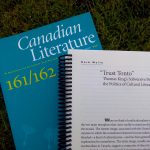
| Discovering Implicit Motivations in Canadian Literature Scholarship | |
| Title |
|---|
Written by Sarah Banting
When your instructors guide class discussion toward particular topics, or set assignment questions that encourage you to think about particular issues, they are implicitly teaching you what is of current interest in this field. As they guide your reading and thinking, they are inviting you to join the scholarly community in its ongoing conversation about pressing topics in Canadian literature studies. This chapter similarly invites you to further understand and participate in this scholarly community by highlighting some of the most frequently recurring and characteristic motivations that inspire professional scholars to make their arguments in this field. It explores how these motivations shape the development of articles in the field. And it will invite you to consider adopting these motivations in your own essays, or to see how you may have already started adopting them—perhaps even without realizing it.
| Douglas Coupland’s Generation A: Storytelling in a Digital Age | |
| Title |
|---|
Written by Shannon Smyrl
Douglas Coupland’s 2009 novel Generation A exposes and probes core cultural anxieties related to isolation, mass commercialism, and environmental destruction—threats that feel imminent in our current digital world. As you study Generation A, look beyond this surface to consider how the thriller narrative is linked to the novel's larger concern with storytelling. Because, ultimately, the novel is a story about storytelling, structured as five interconnected narratives, each with embedded “campfire” stories the characters tell each other. In the end, the characters’ sharing of stories is integral to the novel’s outcome.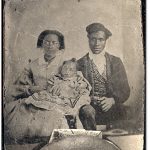
| Indigenous and Diasporic Intersections in Canadian Literature | |
| Title |
|---|
Written by L. Camille van der Marel
Indigenous and diasporic texts are often taught in the same Canadian literature classes and have shared concerns with race, displacement, identity, and community. That said, literary scholars rarely place these literatures in dialogue with one another. This chapter offers guidance for those trying to see, discuss, and research the connections between these two bodies of literature.
| Joy Kogawa’s Obasan | |
| Title |
|---|
Written by Farah Moosa
Joy Kogawa’s novel Obasan (1981) is a powerful narrative about a woman’s attempt to understand her familial past and the historical and cultural legacies she has inherited as a Japanese Canadian. Decades after its first publication, Obasan still captures the attention of many readers and is widely taught in schools, colleges, and universities in Canada. The novel has also received a great deal of critical attention—there are a number of book chapters and articles on Obasan. This chapter serves as an introduction to the novel and some of the scholarly conversations that surround it. In particular, it explores the important and interrelated themes of silence and speech, and memory and history; and it suggests some strategies for close-reading the novel.
| Listening to Canada: The Weakerthans’ “One Great City!” | |
| Title |
|---|
Written by Bronwyn Malloy
This chapter considers the roles of locality and identity in John K. Samson’s song lyrics, particularly through Samson’s evocations of the people, landmarks, and history of Winnipeg, Manitoba in “One Great City!” Locality means the particular place or position of something, and is related to the idea of the “local,” which connotes a specialized knowledge about a certain place or community by virtue of being part of it. Samson, a lifelong Winnipeg resident frequently termed “the poet laureate of Winnipeg rock” (Sorensen), has often made the city his unlikely muse, saying, “I think of Winnipeg as my subject . . . that I’m always trying to get right. . . . Even if I leave, I’ll always be writing about this place” (qtd. in Chong 77).
| Literary Censorship and Controversy in Canada | |
| Title |
|---|
Written by Lucia Lorenzi
This chapter introduces you to literary censorship in Canada, looking both at positions taken by Canadian scholars on the practice of censorship and its effects, as well as at specific examples. We will analyze controversies around three texts to better see how the censorship of Canadian literature works in practice: Timothy Findley’s The Wars (1977) and Beatrice Culleton Mosionier’s In Search of April Raintree (1983) provide examples of censorship where the authors themselves were involved in contesting or responding directly to critics in their texts; Raziel Reid’s When Everything Feels Like the Movies (2014) provides an example of a contemporary attempt to strip a novel of its literary award on the basis of its allegedly controversial content.
| Marie Clements’ Burning Vision | |
| Title |
|---|
Written by Sophie McCall and Christine Kim
The play Burning Vision, by Métis Dene playwright and filmmaker Marie Clements, is an extraordinary exploration of interconnectedness across diverse histories, cultures, languages, and places. The play traces several intertwined historical trajectories, but the more familiar historical event it narrates is how the atomic bombs that were dropped by the United States on Nagasaki and Hiroshima during World War II were made from uranium mined from the lands of the Sahtu Dene First Nation near Port Radium, Northwest Territories. Although this event indelibly and permanently connected these two places in terms of trauma, disease, and environmental poisoning, it also later generated more positive relations of responsibility, accountability, and mutual recognition.
| Official Multiculturalism’s Funding of Canadian Literature: The Writing and Publications Program | |
| Title |
|---|
Written by Brendan McCormack
In this chapter, we will explore how “official multiculturalism”—that is, multiculturalism as a federal government policy in Canada—has influenced the writing and publishing of Canadian literature. While you have likely already thought about multiculturalism as part of the social context within which Canadian literature circulates, or about which Canadian authors write, official multiculturalism has also supported the production of Canadian literature itself. This chapter will introduce you to the history of the Writing and Publications Program (WPP), through which Canada’s federal multiculturalism directorate provided funding for literature from the 1970s-1990s.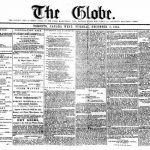
| The Periodical Press: Newspapers, Magazines, and Literary Culture in Early Canada | |
| Title |
|---|
Written by Ceilidh Hart
The book tends to get a great deal of focus in contemporary Canadian literary culture: literary awards, national reading programs such as Canada Reads, university courses, even, tend to place the book at the centre. And yet, in the nineteenth century, it was the periodical press—magazines and newspapers—that drove Canada’s cultural life. This chapter, using the writing career of Isabella Valancy Crawford as a case study, explores the importance to readers and writers alike of periodical publishing in early Canada, and the profound role it played in shaping a national literary culture at that time.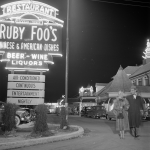
| What is “Restaurant Literature”? Depictions of Chinese Restaurants in Canadian Literature | |
| Title |
|---|
Written by Nathalie Cooke and Shelley Boyd
This chapter identifies a growing body of Canadian literary works depicting Chinese restaurants as sites and sources of narrative, and seeks to answer a series of questions. What are the characteristics of the genre of restaurant literature? What are the key texts—those responsible for shaping, reshaping, and innovating this genre? What historical contexts have influenced this genre’s development? This chapter looks closely at a representative selection of restaurant literature in order to explore ways in which authors have written Chinese restaurants into the literary landscape, and to understand storytelling’s ability to introduce readers to new characters, cultures, and perspectives over time.








 ©
©